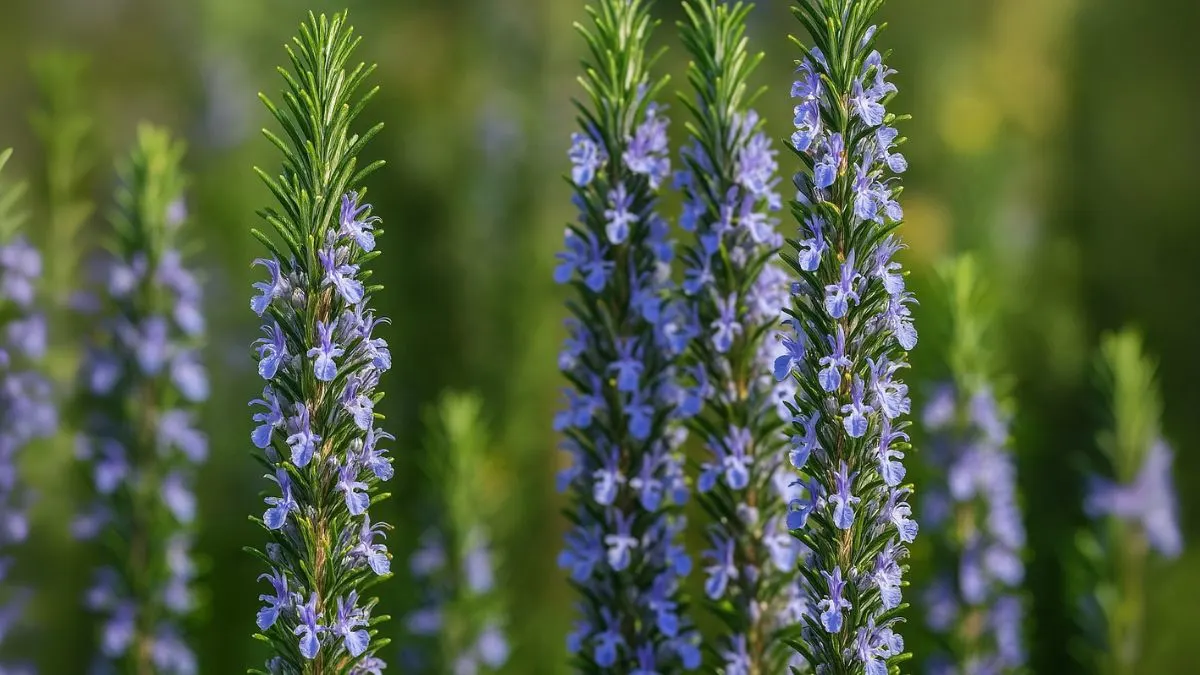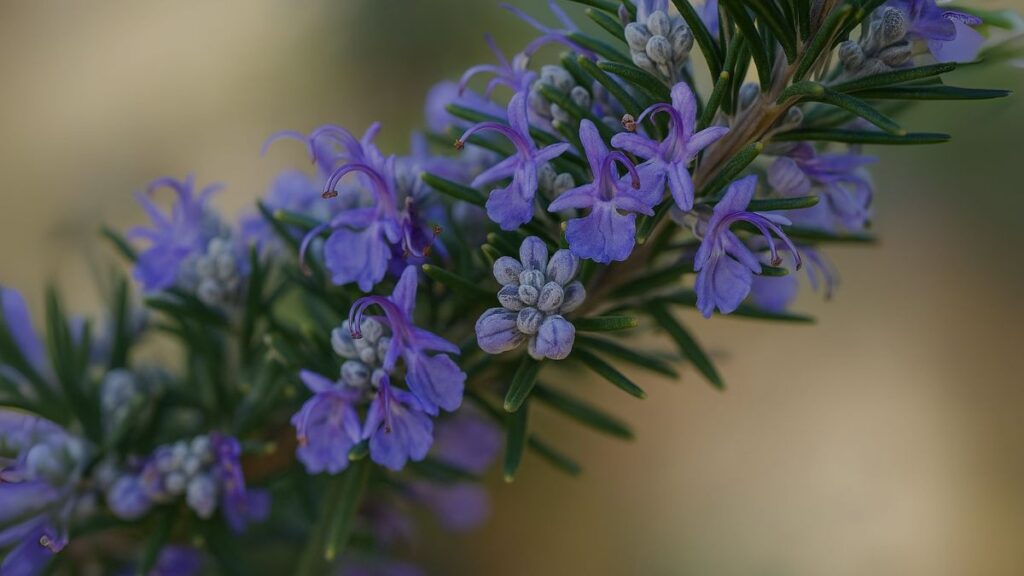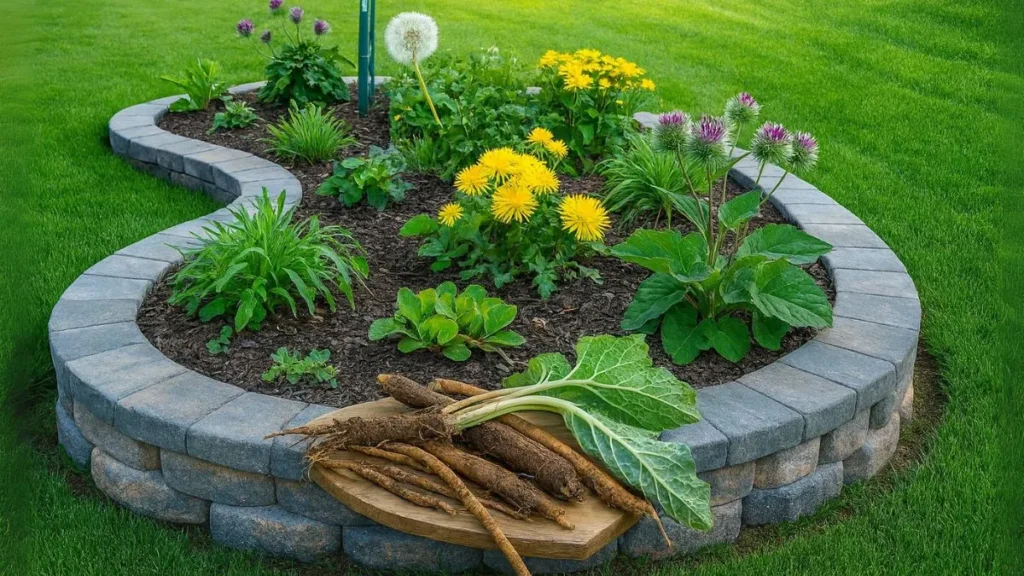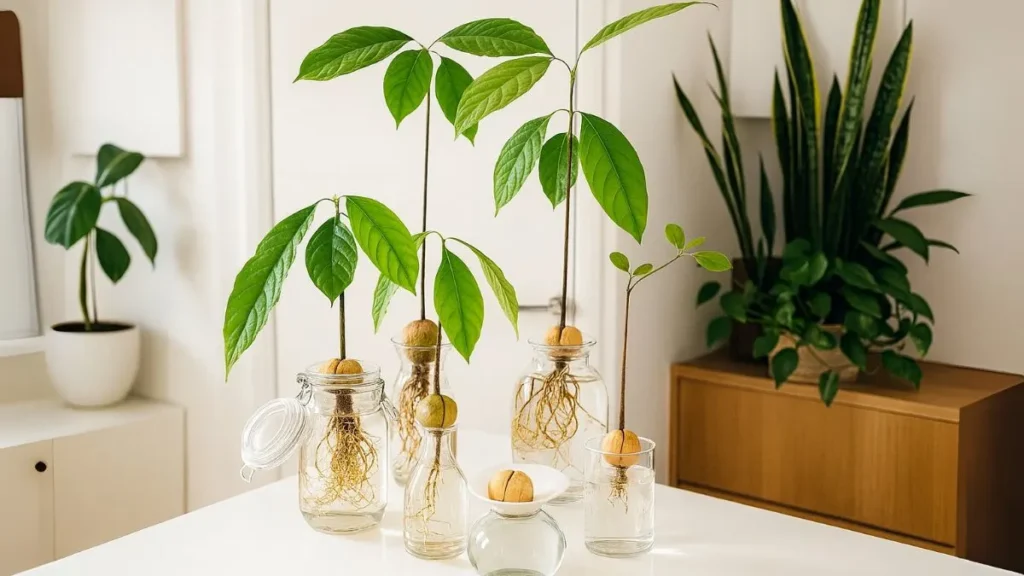When most of us think of rosemary, the iconic woody stems and fragrant needle-like leaves come to mind. But those delicate lilac-blue blossoms? They’re often overlooked—until I accidentally brewed them into tea and got hooked. Since then, I’ve used every bloom. And I’m about to show you why you shouldn’t discard the flowers on your rosemary either.
These edible blooms are versatile, beautiful, and packed with benefits. From wellness rituals to culinary flair and garden-friendly hacks, here are 8 creative, meaningful ways to use your rosemary flowers.
1. Brew a Soothing Rosemary Flower Tea

Rosemary flowers offer a milder, sweeter version of the herb’s earthy flavor—perfect for calming herbal tea.
- How to brew: Steep a teaspoon of fresh or dried blooms in hot water for 5–7 minutes, then add lemon or honey to taste.
- Why it’s soothing: Rosemary is rich in antioxidants, anti-inflammatory, and antimicrobial compounds like rosmarinic and carnosic acid. These substances help fight inflammation and boost cognition and mood. Healthline+2EatingWell+2
Tea made from the blooms is a perfect ritual—gentle on the senses, calming on the mind.
2. Craft Floral-Infused Rosemary Oil
Create a fragrant, multipurpose oil:
- Stuff a jar with fresh rosemary flowers and cover with olive oil.
- Let steep in sunlight for 2–3 weeks, then strain.
- Store in a dark glass bottle.
Use it in skincare, as a hair serum, or in salad dressings. The aroma is heavenly—and it’s rooted in clean, botanical goodness.

3. Add a Floral Twist to Your Baking
Rosemary flowers add subtle herbal depth to sweet or savory baked treats:
- Try them in lemon shortbread, muffins, or focaccia.
- Their soft flavor pairs beautifully with honey, vanilla, and citrus.
At a brunch once, I added them to lemon scones—people couldn’t stop complimenting the fragrant, unexpected lift.
4. Make Natural Air Fresheners
Dry rosemary flowers and place them in breathable sachets. Tuck them into drawers, closets, or even your car. You’ll be greeted by a fresh, woodsy aroma every time you open the space.
It’s eco-friendly, chemical-free aroma—simple yet luxurious.
5. Create Herbal Vinegar Infusions
Level up your kitchen essentials:
- Place rosemary flowers in apple cider or white vinegar.
- Let it steep for two weeks.
- Strain and use it in dressings or natural cleaning sprays.
This aromatic vinegar doubles as a beauty—display it on your counter as both décor and flavor enhancer.
6. Garnish Your Dishes with a Floral Touch
A tiny sprinkle of rosemary blossoms transforms ordinary plates into restaurant-worthy dishes. Use them to decorate:
- Roasted vegetables
- Creamy pasta
- Goat cheese crostinis
And here’s a summer favorite: freeze blooms in ice cubes for cocktails or infused water. Delightfully elegant.
7. Relax with a Rosemary Flower Bath Soak
After a long gardening day (or simply a long day), add rosemary flowers to your Epsom salt bath. The fragrance eases muscle tension and invites relaxation.
From my gardening group in Canada: this tip is a self-care hit post-harvest.
Also Read: From Dull to Dreamy—Create an Indoor Plant Room That Steals the Show
8. Feed the Bees (Let Blooms Flourish)
If you opt not to harvest them, leave the flowers to bloom. Rosemary flowers are adored by pollinators—especially honeybees and bumblebees, supporting biodiversity in urban and rural gardens alike.
Letting them bloom is a small act with a big impact.
Bonus Gardening Tip: Pair Rosemary with Marigolds
While you’re harnessing rosemary blooms, plant marigolds between vegetables. Their strong scent repels aphids, nematodes, and whiteflies—creating a natural, synergistic pest barrier.
Gardeners in both homestead and urban settings swear by this simple, organic strategy.
The Science Behind the Magic
Rosemary flowers aren’t just pretty—they’re potent. According to research:
- They’re rich in phenolic compounds (like rosmarinic and caffeic acid), flavonoids like luteolin and quercetin, which reduce inflammation, boost digestion, circulation, and cognitive function.
- Overall, rosemary (leaves and flowers) delivers antioxidants, anti-inflammatory, antimicrobial, neuroprotective, and memory-enhancing benefits.
Small Blooms, Big Advantages
The next time your rosemary plant blooms, resist the urge to prune out those petals. Instead, let them transform your tea, meals, skincare, and even home ambiance.
Not just tools, they’re tiny reminders of wellness, creativity, and purpose.
Try it for a month—like I did—and let the magic of rosemary flower uses surprise you.




